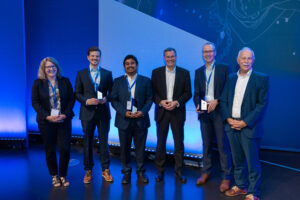
Carl Zeiss Award for Young Researchers
On Monday evening, I received the Carl Zeiss Award for Young Researchers, which is awarded to outstanding up-coming scientists in optics and photonics by the
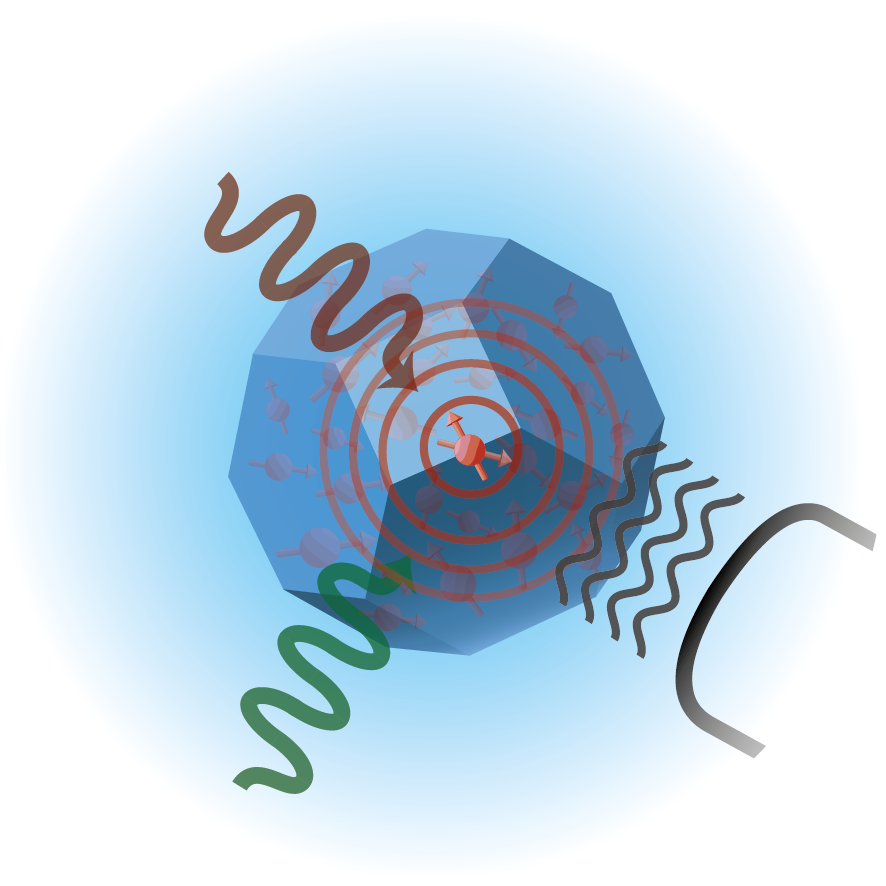
In 2022 I have started my first independent research project with the aim of establishing a new experimental platform, namely cold levitated mesoscopic diamonds at high vacuum. We will investigate means for efficient cooling of both the external and the internal temperature of the diamond particles using their internal Nitrogen-Vacancy centers.
The underlying long-term vision is to achieve quantum mechanical coupling between individual spin states and the motion of a macroscopic object.
The project is funded by an ESPRIT grant from the FWF and is hosted by the Quantum Interfaces Group of Prof. Tracy Northup at the University of Innsbruck.
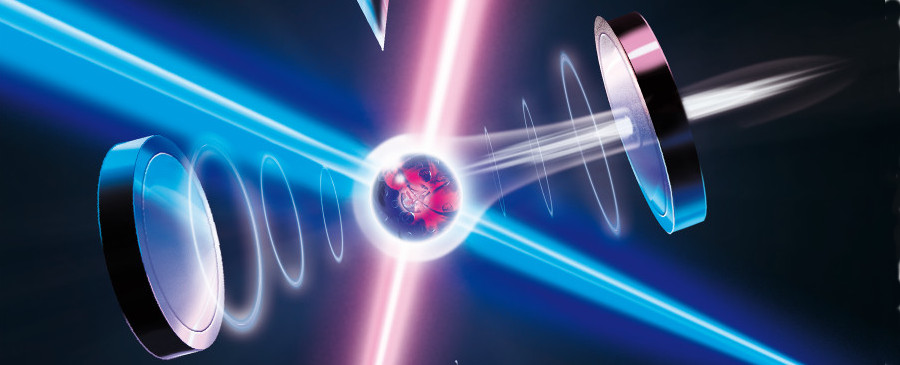
Cavity coupled trapped ions are a promising platform to realize long-range quantum networks due to their superior spin-photon coupling efficiencies and entanglement fidelities, and a communication wavelength compatible for high efficient conversion to telecom frequencies.
In 2022 we have realized entanglement between two trapped ion quantum network nodes across the campus of the University of Innsbruck. This achievement was a joint effort between the teams led by Prof. Tracy Northup and Dr. Ben Lanyon.
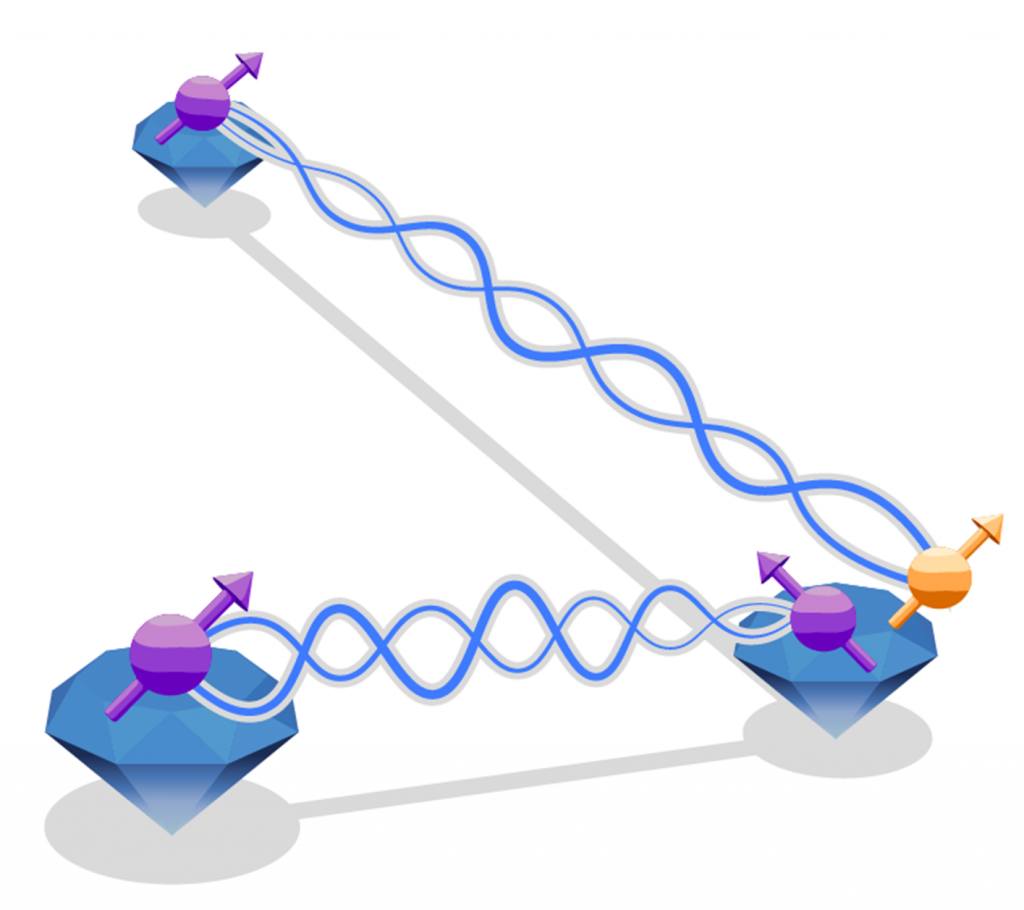
The realization of quantum networks requires versatile quantum network nodes to distribute entanglement across the network and to store it for further processing.
As an Erwin-Schrödinger fellow at QuTech, TU Delft, together with a team led by Prof. Ronald Hanson, we have build the first quantum network exceeding two quantum network nodes – a crucial step to realize a future Quantum Internet.
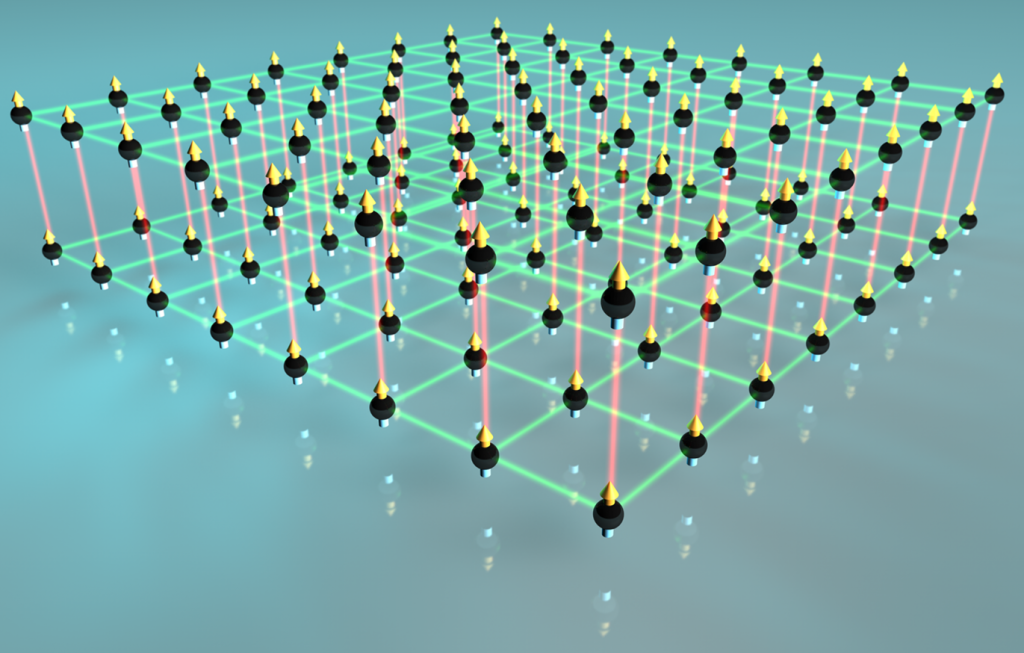
Quantum Simulations are key for the investigation of quantum mechanical properties. By using a well controlled quantum mechanical system one can implement and study tailored Hamiltonians and unlock new types of matter.
During my PhD thesis work in the group of Prof. Francesca Ferlaino I used the toolbox of lattice-confined dipolar atoms to perform Quantum Simulations of exotic inter-atom interactions that extend across neighboring lattice sites.

On Monday evening, I received the Carl Zeiss Award for Young Researchers, which is awarded to outstanding up-coming scientists in optics and photonics by the
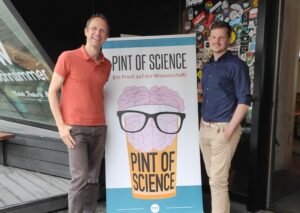
Yesterday, together with Prof. Gerhard Kirchmair, I had the pleasure of speaking at the Pint of Science event in Innsbruck. We had a great time
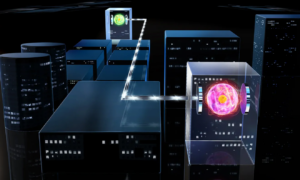
Trapped ions are a promising platform for the realization of future quantum networks, as they combine high quality local quantum operations with an efficient spin-photon
Krutyanskiy, V.; Galli, M.; Krcmarsky, V.; Baier, S.; Fioretto, D. A.; Pu, Y.; Mazloom, A.; Sekatski, P.; Canteri, M.; Teller, M.; Schupp, J.; Bate, J.; Meraner, M.; Sangouard, N.; Lanyon, B. P.; Northup, T. E.
Entanglement of Trapped-Ion Qubits Separated by 230 Meters Artikel
In: Phys. Rev. Lett., Bd. 130, Ausg. 5, S. 050803, 2023.
@article{Krutyanskiy_ion_entanglement_2023,
title = {Entanglement of Trapped-Ion Qubits Separated by 230 Meters},
author = {V. Krutyanskiy and M. Galli and V. Krcmarsky and S. Baier and D. A. Fioretto and Y. Pu and A. Mazloom and P. Sekatski and M. Canteri and M. Teller and J. Schupp and J. Bate and M. Meraner and N. Sangouard and B. P. Lanyon and T. E. Northup},
url = {https://link.aps.org/doi/10.1103/PhysRevLett.130.050803},
doi = {10.1103/PhysRevLett.130.050803},
year = {2023},
date = {2023-02-02},
urldate = {2023-02-01},
journal = {Phys. Rev. Lett.},
volume = {130},
issue = {5},
pages = {050803},
publisher = {American Physical Society},
abstract = {We report on an elementary quantum network of two atomic ions separated by 230 m. The ions are trapped in different buildings and connected with 520(2) m of optical fiber. At each network node, the electronic state of an ion is entangled with the polarization state of a single cavity photon; subsequent to interference of the photons at a beam splitter, photon detection heralds entanglement between the two ions. Fidelities of up to (88.0+2.2−4.7)% are achieved with respect to a maximally entangled Bell state, with a success probability of 4×10^−5. We analyze the routes to improve these metrics, paving the way for long-distance networks of entangled quantum processors.},
keywords = {},
pubstate = {published},
tppubtype = {article}
}
Hermans, S L N; Pompili, M; Martins, L Dos Santos; Montblanch, A R-P; Beukers, H K C; Baier, S; Borregaard, J; Hanson, R
In: New Journal of Physics, Bd. 25, Nr. 1, S. 013011, 2023.
@article{Hermans_single_photon_protocol_2023,
title = {Entangling remote qubits using the single-photon protocol: an in-depth theoretical and experimental study},
author = {S L N Hermans and M Pompili and L Dos Santos Martins and A R-P Montblanch and H K C Beukers and S Baier and J Borregaard and R Hanson},
url = {https://dx.doi.org/10.1088/1367-2630/acb004},
doi = {10.1088/1367-2630/acb004},
year = {2023},
date = {2023-01-18},
urldate = {2023-01-18},
journal = {New Journal of Physics},
volume = {25},
number = {1},
pages = {013011},
publisher = {IOP Publishing},
abstract = {The generation of entanglement between remote matter qubits has developed into a key capability for fundamental investigations as well as for emerging quantum technologies. In the single-photon, protocol entanglement is heralded by generation of qubit-photon entangled states and subsequent detection of a single photon behind a beam splitter. In this work we perform a detailed theoretical and experimental investigation of this protocol and its various sources of infidelity. We develop an extensive theoretical model and subsequently tailor it to our experimental setting, based on nitrogen-vacancy centers in diamond. Experimentally, we verify the model by generating remote states for varying phase and amplitudes of the initial qubit superposition states and varying optical phase difference of the photons arriving at the beam splitter. We show that a static frequency offset between the optical transitions of the qubits leads to an entangled state phase that depends on the photon detection time. We find that the implementation of a Charge-Resonance check on the nitrogen-vacancy center yields transform-limited linewidths. Moreover, we measure the probability of double optical excitation, a significant source of infidelity, as a function of the power of the excitation pulse. Finally, we find that imperfect optical excitation can lead to a detection-arm-dependent entangled state fidelity and rate. The conclusion presented here are not specific to the nitrogen-vacancy centers used to carry out the experiments, and are therefore readily applicable to other qubit platforms.},
keywords = {},
pubstate = {published},
tppubtype = {article}
}
Bradley, C. E.; Bone, S. W.; Moller, P. F. W.; Baier, S.; Degen, M. J.; Loenen, S. J. H.; Bartling, H. P.; Markham, M.; Twitchen, D. J.; Hanson, R.; Elkouss, D.; Taminiau, T. H.
Robust quantum-network memory based on spin qubits in isotopically engineered diamond Artikel
In: npj Quantum Information, Bd. 8, Nr. 1, S. 122, 2022, ISSN: 2056-6387.
@article{Bradley_Memory_2021,
title = {Robust quantum-network memory based on spin qubits in isotopically engineered diamond},
author = {C. E. Bradley and S. W. Bone and P. F. W. Moller and S. Baier and M. J. Degen and S. J. H. Loenen and H. P. Bartling and M. Markham and D. J. Twitchen and R. Hanson and D. Elkouss and T. H. Taminiau},
url = {https://doi.org/10.1038/s41534-022-00637-w},
doi = {10.1038/s41534-022-00637-w},
issn = {2056-6387},
year = {2022},
date = {2022-10-18},
urldate = {2021-11-18},
journal = {npj Quantum Information},
volume = {8},
number = {1},
pages = {122},
abstract = {Quantum networks can enable quantum communication and modular quantum computation. A powerful approach is to use multi-qubit nodes that provide quantum memory and computational power. Nuclear spins associated with defects in diamond are promising qubits for this role. However, dephasing during optical entanglement distribution hinders scaling to larger systems. Here, we show that a 13C-spin quantum memory in isotopically engineered diamond is robust to the optical link operation of a nitrogen-vacancy centre. The memory lifetime is improved by two orders-of-magnitude upon the state-of-the-art, surpassing reported times for entanglement distribution. Additionally, we demonstrate that the nuclear-spin state can survive ionisation and recapture of the nitrogen-vacancy electron. Finally, we use simulations to show that combining this memory with previously demonstrated entanglement links and gates can enable key network primitives, such as deterministic non-local two-qubit gates, paving the way for test-bed quantum networks capable of investigating complex algorithms and error correction.},
keywords = {},
pubstate = {published},
tppubtype = {article}
}
Patscheider, A.; Chomaz, L.; Natale, G.; Petter, D.; Mark, M. J.; Baier, S.; Yang, B.; Wang, R. R. W.; Bohn, J. L.; Ferlaino, F.
Determination of the scattering length of erbium atoms Artikel
In: Phys. Rev. A, Bd. 105, Ausg. 6, S. 063307, 2022.
@article{Patscheider_ScattLen_2022,
title = {Determination of the scattering length of erbium atoms},
author = {A. Patscheider and L. Chomaz and G. Natale and D. Petter and M. J. Mark and S. Baier and B. Yang and R. R. W. Wang and J. L. Bohn and F. Ferlaino},
url = {https://link.aps.org/doi/10.1103/PhysRevA.105.063307},
doi = {10.1103/PhysRevA.105.063307},
year = {2022},
date = {2022-06-08},
urldate = {2022-06-01},
journal = {Phys. Rev. A},
volume = {105},
issue = {6},
pages = {063307},
publisher = {American Physical Society},
abstract = {An accurate knowledge of the scattering length is fundamental in ultracold quantum gas experiments and essential for the characterisation of the system as well as for a meaningful comparison to theoretical models. Here, we perform a careful characterisation of the s-wave scattering length a_s for the four highest-abundance isotopes of erbium, in the magnetic field range from 0G to 5G. We report on cross-dimensional thermalization measurements and apply the Enskog equations of change to numerically simulate the thermalization process and to analytically extract an expression for the so-called number of collisions per re-thermalization (NCPR) to obtain a_s from our experimental data. We benchmark the applied cross-dimensional thermalization technique with the experimentally more demanding lattice modulation spectroscopy and find good agreement for our parameter regime. Our experiments are compatible with a dependence of the NCPR with a_s, as theoretically expected in the case of strongly dipolar gases. Surprisingly, we experimentally observe a dependency of the NCPR on the density, which might arise due to deviations from an ideal harmonic trapping configuration. Finally, we apply a model for the dependency of the background scattering length with the isotope mass, allowing to estimate the number of bound states of erbium.},
keywords = {},
pubstate = {published},
tppubtype = {article}
}
Hermans, S. L. N.; Pompili, M.; Beukers, H. K. C.; Baier, S.; Borregaard, J.; Hanson, R.
Qubit teleportation between non-neighbouring nodes in a quantum network Artikel
In: Nature, Bd. 605, Nr. 7911, S. 663-668, 2022, ISSN: 1476-4687.
@article{Hermans_Teleport_2022,
title = {Qubit teleportation between non-neighbouring nodes in a quantum network},
author = {S. L. N. Hermans and M. Pompili and H. K. C. Beukers and S. Baier and J. Borregaard and R. Hanson},
url = {https://doi.org/10.1038/s41586-022-04697-y},
doi = {10.1038/s41586-022-04697-y},
issn = {1476-4687},
year = {2022},
date = {2022-05-25},
urldate = {2022-05-25},
journal = {Nature},
volume = {605},
number = {7911},
pages = {663-668},
abstract = {Future quantum internet applications will derive their power from the ability to share quantum information across the network. Quantum teleportation allows for the reliable transfer of quantum information between distant nodes, even in the presence of highly lossy network connections. Although many experimental demonstrations have been performed on different quantum network platforms, moving beyond directly connected nodes has, so far, been hindered by the demanding requirements on the pre-shared remote entanglement, joint qubit readout and coherence times. Here we realize quantum teleportation between remote, non-neighbouring nodes in a quantum network. The network uses three optically connected nodes based on solid-state spin qubits. The teleporter is prepared by establishing remote entanglement on the two links, followed by entanglement swapping on the middle node and storage in a memory qubit. We demonstrate that, once successful preparation of the teleporter is heralded, arbitrary qubit states can be teleported with fidelity above the classical bound, even with unit efficiency. These results are enabled by key innovations in the qubit readout procedure, active memory qubit protection during entanglement generation and tailored heralding that reduces remote entanglement infidelities. Our work demonstrates a prime building block for future quantum networks and opens the door to exploring teleportation-based multi-node protocols and applications.},
keywords = {},
pubstate = {published},
tppubtype = {article}
}